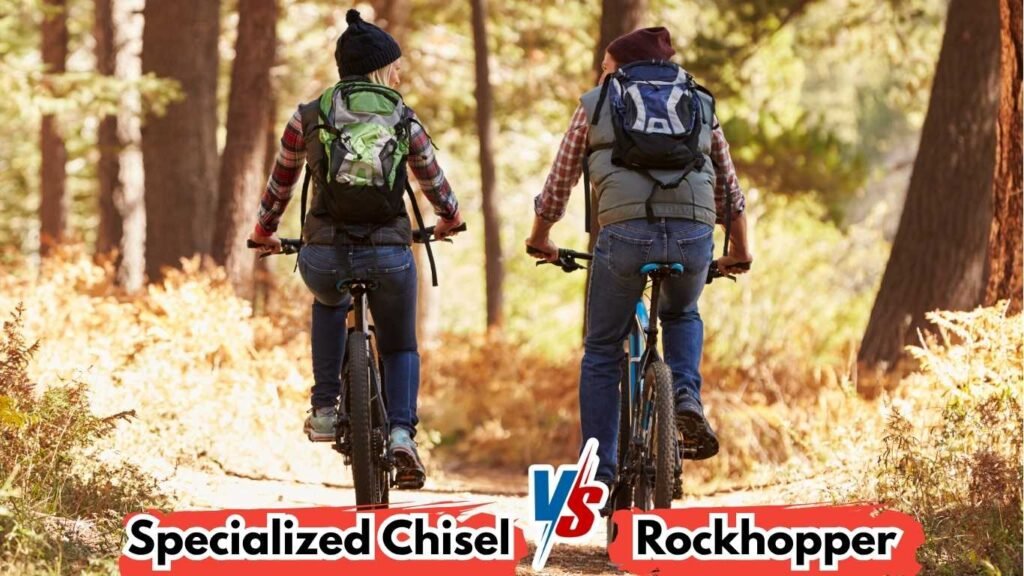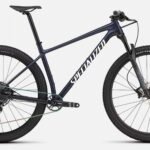If you’re stuck choosing between Specialized Chisel vs Rockhopper, that’s very common confusion.
I’ve seen many riders get confused about which one’s actually worth the money and time.
Both look good, both come from a top brand, but deep down, they’re totally different beasts.
I’ll tell you the exact difference, not the boring spec sheet thing, but real on-trail difference, feel, budget, durability, long-term value, looks — everything that actually matters when you ride.
Quick Look Before We Go Deep
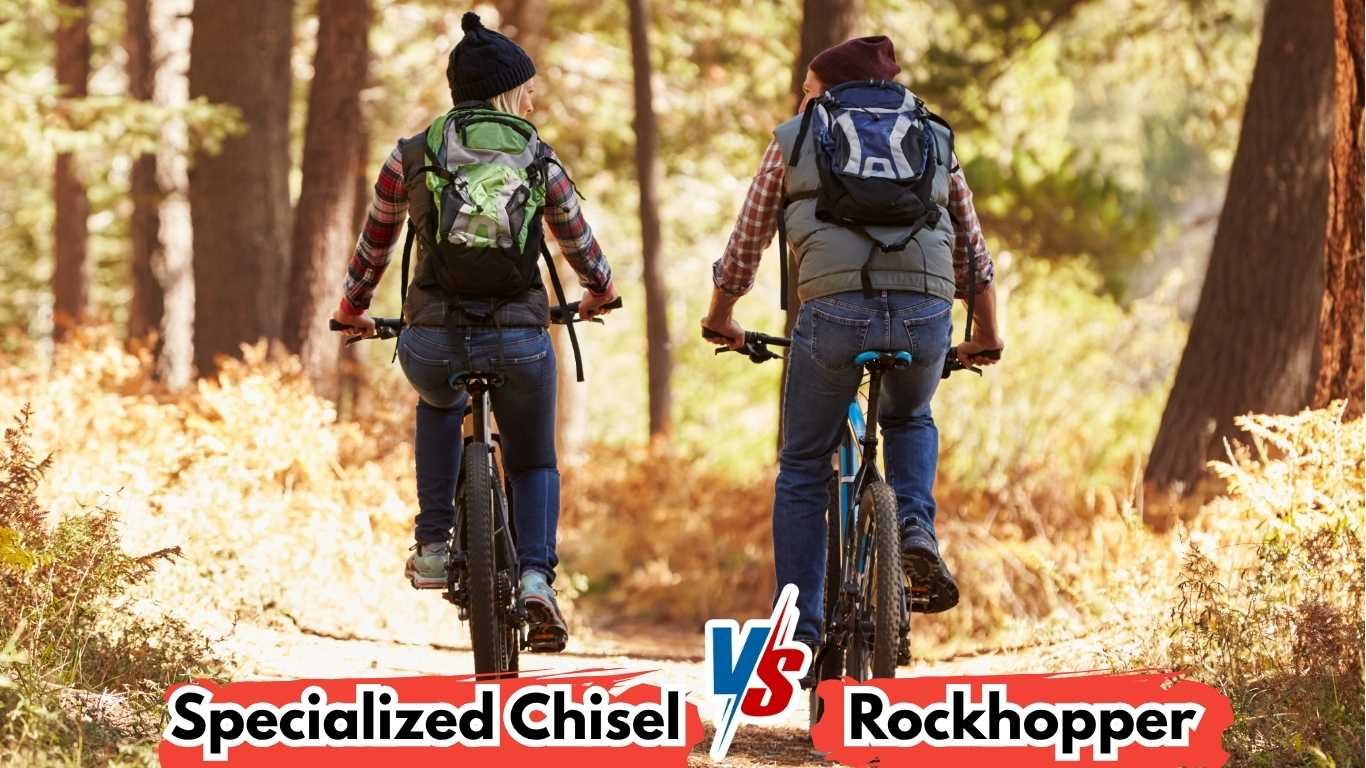
Specialized Chisel — built for speed, XC racing, lighter, faster, more performance-focused.
Specialized Rockhopper — built for beginners or weekend trail riders, more forgiving, comfy, durable, and way easier to live with.
If you’re already a regular rider or planning to go long-term, Chisel will pull you that way.
But if you just ride for fun or fitness, Rockhopper fits like a glove.
Still, you’ll see how big that gap really is once we go into detail by detail.
Frame Quality and Design
The first thing that makes or breaks your ride — the frame.
The Chisel uses Specialized’s D’Aluisio Smartweld M5 Alloy, the same material they use in some of their race-level aluminum bikes.
It’s strong but insanely light. The welds look clean, like one single piece — that’s not for show, that’s how it stays stiff when you climb or sprint.
The Rockhopper runs A1 Premium Butted Aluminum, heavier, but rugged.
It’s like a solid old friend — it’ll take hits, small crashes, rough handling, and still keep going.
If you’re a beginner or planning to ride mostly local trails and fire roads, this frame is perfect.
Both have internal cable routing, but the Chisel’s is way cleaner.
The Rockhopper has a bit of that exposed entry-exit type cable design — not ugly, just less refined.
If you haven’t already read this one, check this too — What Happens If You Bike Every Day for 30 Minutes.
Weight Difference (You’ll Feel It)
You can say weight doesn’t matter until you actually start climbing.
- Chisel (2025) sits around 11.3–11.6 kg depending on build.
- Rockhopper (2025) ranges around 13.4–14.7 kg.
Almost a 2.5 kg difference — and that’s big when you’re out on real trails.
The Chisel jumps forward quicker, climbs smoother, and feels alive under you. The
Rockhopper, meanwhile, feels steady and planted — good for beginners, but you’ll notice it’s not as “zippy.”
That’s where your personal style matters — if you enjoy pushing hard uphill or racing, go Chisel.
If you’re the kind who rides for fun, not stopwatch, Rockhopper’s extra stability actually helps.
Suspension Setup
Both use 100mm travel forks, but don’t let that same number fool you.
Chisel 2025 — comes with RockShox SID SL or Judy Silver TK, depending on trim.
Air-sprung, fully adjustable rebound and lockout. It feels crisp and smooth on roots, rocks, and small chatter.
Rockhopper 2025 — uses SR Suntour XCM30 or XCR Air on higher trims. It’s good, but it’s not race-ready. Coil forks flex a bit more and don’t react as quickly as the SID or Judy on the Chisel.
If you ride mixed trails, Rockhopper is totally fine.
But if you’re going to hit technical XC climbs or rolling singletracks, that Chisel fork will make you grin.
Drivetrain & Gear Range
This part decides how easily you’ll climb and how long you’ll stay happy before thinking about upgrades.
Chisel 2025 — comes with SRAM NX Eagle 1×12 or Shimano Deore 12-speed setups.
You get:
- 10–51T cassette
- 32T crank
- Buttery shifting
- Zero dropped chains even when riding fast downhill.
Rockhopper 2025 — 1×10 or 2×9 setups (Altus or Deore mix). Works fine, but The Jump Between Gears Feels Wider and less refined. You’ll notice a small lag under load.
If you plan to ride hilly trails or train for endurance rides, Chisel’s 12-speed range is perfect.
The Rockhopper, though, is super easy to maintain — great if you don’t want to think about tuning or chain replacements all the time.
It’s just like I said in Mountain Bike Chain Maintenance — lower-end drivetrains last long but don’t shift as smoothly.
Wheels & Tires
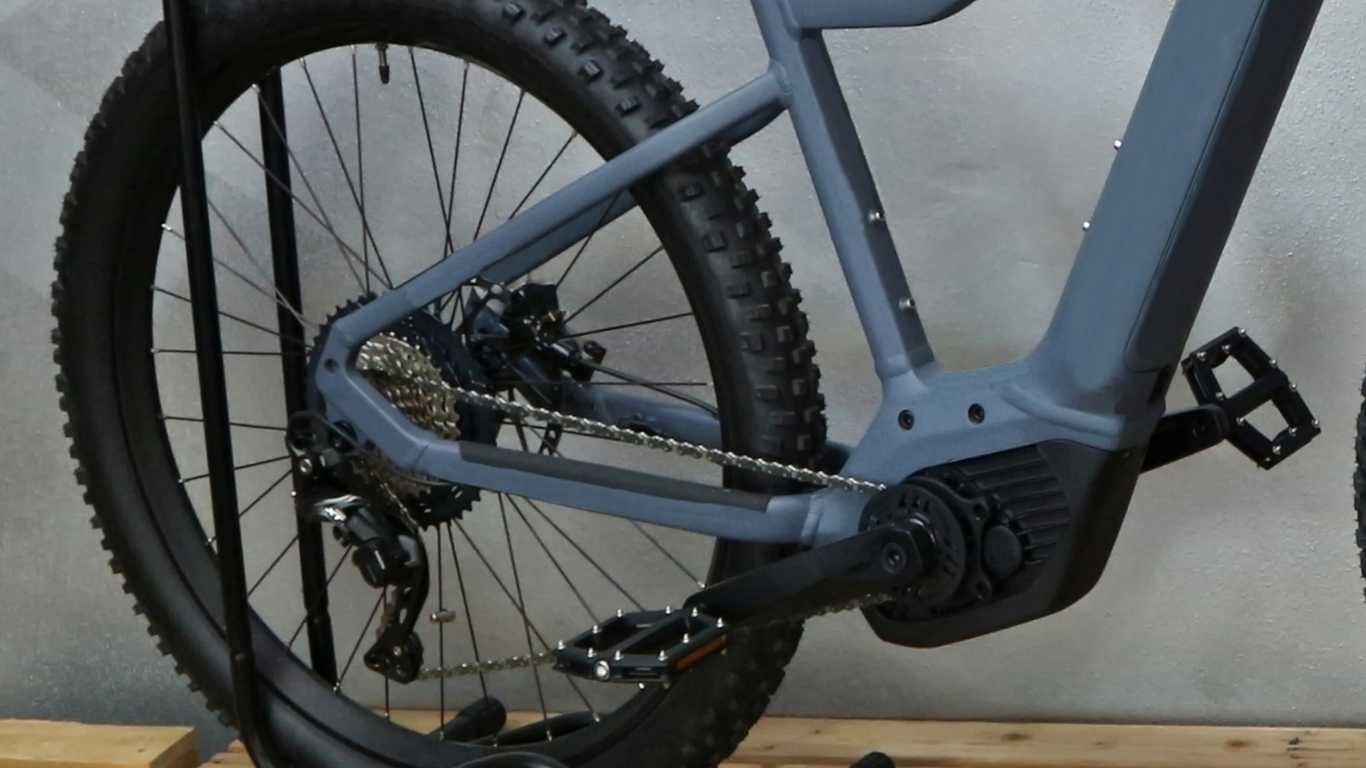
Both roll on 29-inch wheels, which I personally prefer for stability and momentum.
But —
Chisel: Tubeless-ready rims, Fast Trak Control 2.35″ tires, super fast rolling, perfect for XC.
Rockhopper: Standard alloy rims, Ground Control 2.35″ tires, thicker tread, better grip on loose dirt, but slower on climbs.
If you plan to experiment with tubeless, the Chisel saves you the upgrade hassle. Less chance of flats, better traction, lighter ride feel.
If you test them on local trails, Chisel will roll faster. Rockhopper is more predictable but slower in tight turns.
Brakes
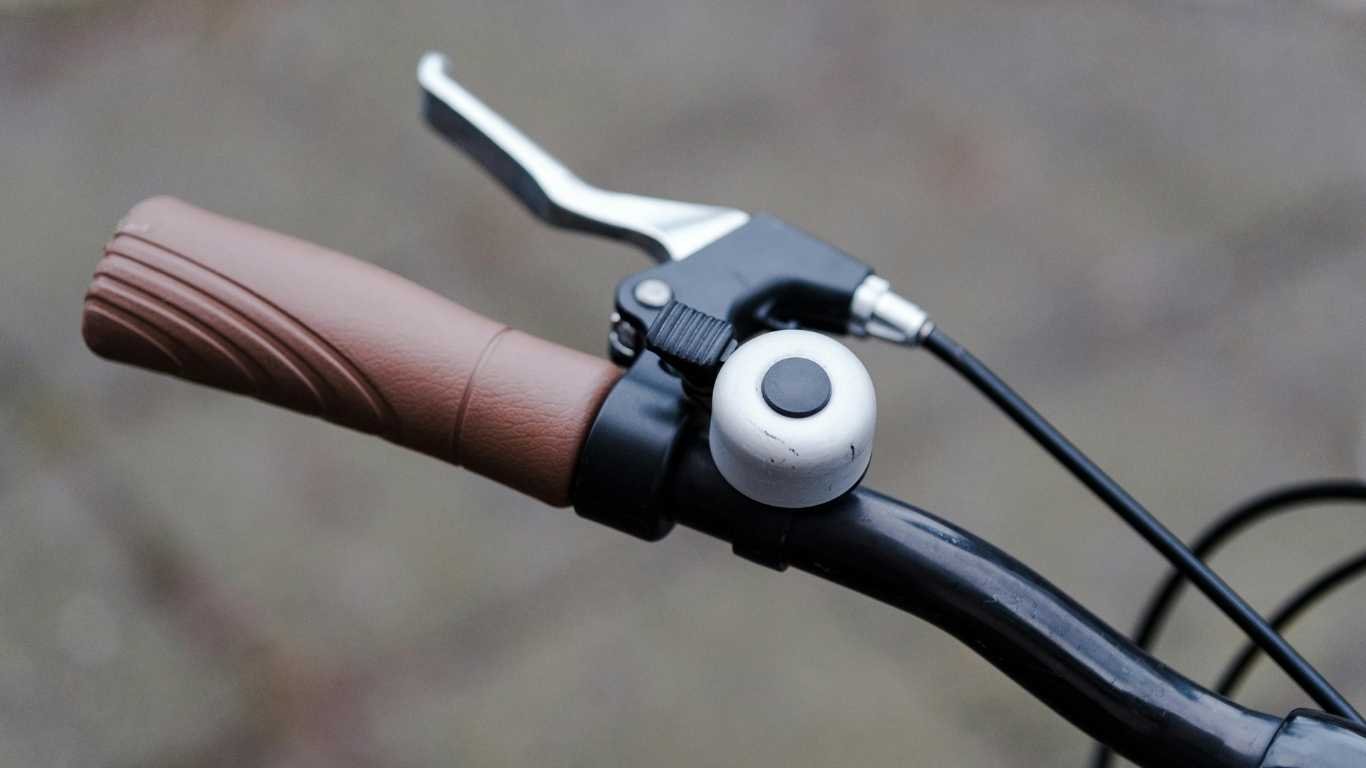
Both come with hydraulic disc brakes, but Chisel’s are Shimano MT501/MT500 or higher.
The lever feel is sharper and more progressive.
Rockhopper gets Tektro HD-M275 or basic Shimano hydraulics, depending on variant.
Reliable, but a bit on/off type feel — especially when braking fast downhill.
If you love downhill sections, you should read Clipless vs Flat Pedals — because Chisel’s control really shines when paired with good clipless pedals.
Geometry & Ride Feel
This is where you’ll feel their personality difference.
The Chisel has a steeper head angle (68°) and shorter chainstays, putting you in a more forward, aggressive posture.
You feel connected to the bike, like it’s an extension of you. Perfect for fast rides, sprints, and races.
The Rockhopper is more relaxed at 68.5–69.5°, giving upright comfort and a bit of flex forgiveness.
That means it’s forgiving even if your line choice isn’t perfect.
For beginners or anyone over 40 starting MTB, I’d say this — go Rockhopper first. I even talked about that in Starting Mountain Bike at 40.
Price & Value (2025 Market)
Here’s where you’ll make your real choice.
| Model | 2025 Price Range | Rider Level |
| Rockhopper 29 (Base to Elite) | $700–$1,250 | Beginner / Recreational |
| Chisel Comp / Chisel | $1,800–$2,500 | Intermediate to XC Racer |
The gap looks wide, but it’s justified. You’re paying for a high-end frame, drivetrain, and lighter setup with Chisel.
But for casual riders, Rockhopper gives more than enough for its price.
Still, if you plan to ride consistently, investing once in Chisel pays off long-term. Less need to upgrade later.
Also, check this too — What Is the Best Age to Start Mountain Biking.
Durability and Maintenance
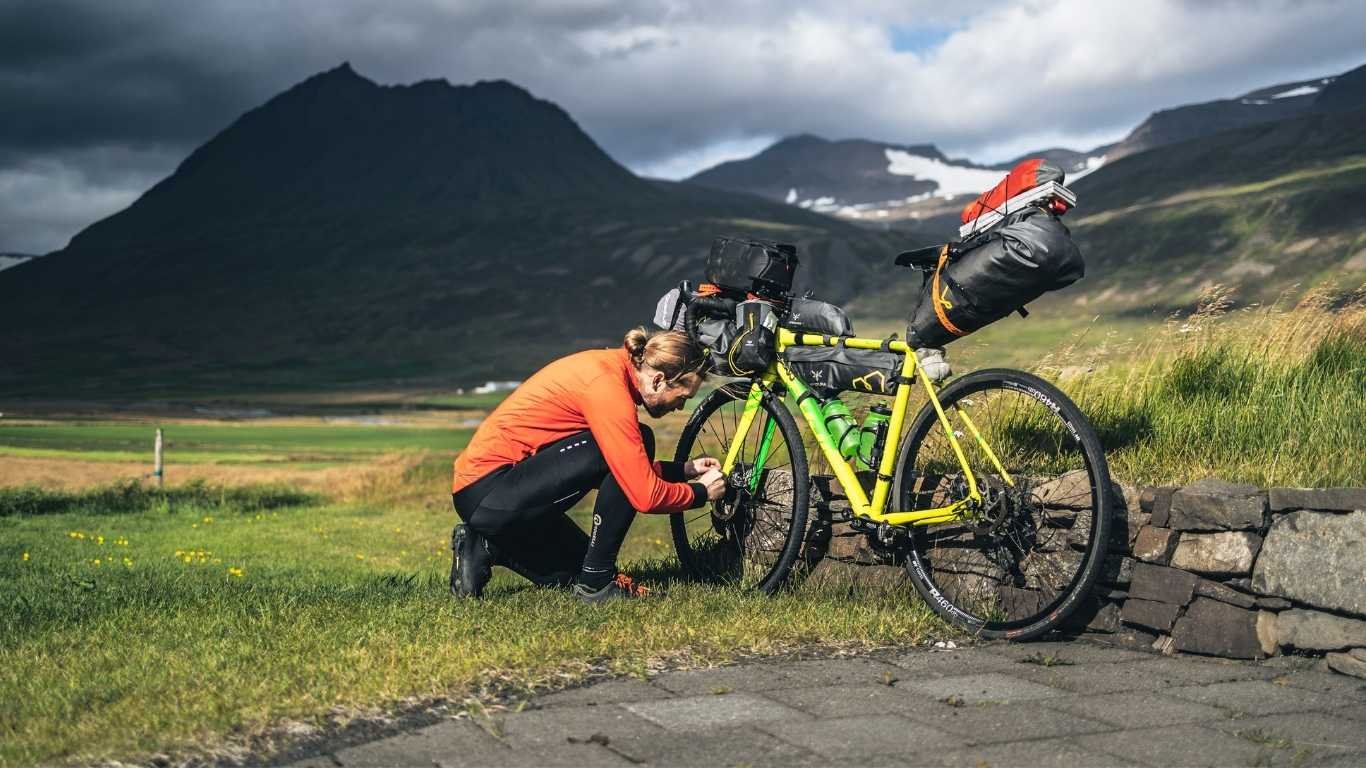
Rockhopper — literally a tank. It can take abuse, muddy rides, skipped maintenance, and even lazy cleaning. You can leave it in the garage for weeks, and it’ll still go strong.
Chisel — requires a bit more love. Light frame, performance parts — they’re meant to be tuned, cleaned, and kept sharp.
That’s why I always tell new riders to learn the basics of maintenance early.
A quick check after every few rides, chain lube, fork pressure — all these keep the Chisel running like new.
You can get all that detail from here: Mountain Bike Maintenance — exactly what I do for mine.
Looks and Finish
Not gonna lie — Chisel looks stunning.
Smooth welds, matte finish, subtle branding, internally routed cables. It looks premium even parked.
Rockhopper is more old-school and bold, with bright color options, visible welds, and that solid trail look.
If aesthetics matter to you, Chisel wins hands down. It’s got that “pro-level but not shouting” kind of vibe.
Upgrade Potential
You’ll eventually want to upgrade something — wheels, brakes, or drivetrain.
The Chisel frame is already race-level, so you can throw carbon wheels, a dropper post, or even higher-end forks later.
Every upgrade feels worth it. Here are some best upgrades for specialized chisel.
Rockhopper, on the other hand, has limits. The frame geometry won’t really justify high-end parts after a point. It’s great as-is, but if you keep riding more, you’ll eventually outgrow it.
That’s why, for anyone serious about progression, I suggest investing straight in the Chisel.
Because upgrading a Rockhopper over time ends up costing close to a new Chisel anyway.
Comfort and Long Rides
Chisel is firm. You’ll feel every root and bump if you don’t adjust the fork or tire pressure properly.
But once you dial it in, it glides.
Rockhopper is naturally softer due to thicker tubing and a heavier frame. Perfect for chill weekend rides or commuting.
If you ride daily for fitness, both can work — but if you want that speed motivation feeling every morning, Chisel gives that rush.
You can even check What Happens If You Bike Every Day for 30 Minutes.
Final Decision — Which One’s For You?
If you’ve read till here, you already know your answer.
Pick Specialized Chisel (2025) if you:
- Ride regularly or plan to race XC.
- Want light weight, speed, and top-tier handling.
- Care about performance and future upgrades.
- Plan to grow with your bike.
Pick Rockhopper (2025) if you:
- You’re new or casual.
- Want comfort, simple maintenance, and affordability.
- Don’t care about racing, just enjoy the trails.
- Want a bike that’ll last years without fuss.
Either way, both are solid bikes — and they’ll both take you places. It just depends on how fast and how far you plan to go.
Conclusion
The Specialized Chisel 2025 is for riders who want more than just weekend rides. It’s the bike that pushes you, climbs like it’s got its own motor, and feels alive under your legs.
The lighter frame, better fork, 12-speed setup — everything is tuned for speed and efficiency.
It’s the kind of bike that’ll grow with you, no matter how advanced you get.
The Rockhopper 2025 is for the riders who just want to get out and ride. No stress, no fancy tuning, just pure riding fun.
It’s cheaper, tougher, and more forgiving. And if you’re new, it’ll build your skills without punishing you for every mistake.
But if you’re thinking long-term — and you know you’ll stick with this mountain biking sport — go with the Chisel.
It’s not just lighter, it’s future-proof. You’ll thank yourself two years from now when your friends start talking about upgrading, and your bike’s already there.
In the end — Rockhopper is for the fun. Chisel is for the future.
FAQs
Is the Specialized Chisel worth the higher price over Rockhopper?
Yes — if you plan to ride regularly or race. The Chisel 2025 has a better frame (M5 Smartweld alloy), a higher-end fork, and a smoother drivetrain.
You’ll feel the quality of every single ride. But if you’re only hitting local trails once or twice a week, the Rockhopper gives better value.
You can also see how to maintain whichever you buy here — Mountain Bike Maintenance.
Which one’s better for beginners — Chisel or Rockhopper?
If you’re just starting out, go straight for the Rockhopper. It’s the kind of bike that forgives your mistakes and still makes every ride fun.
The geometry is relaxed, the handling is smooth, and it doesn’t punish you when your line choice isn’t perfect.
You can ride it for hours without feeling beat up.
The Chisel, though lighter and faster, feels sharper — more reactive, less forgiving.
It’s built for riders who already have balance and confidence on technical climbs or fast descents.
So if you’re new or coming back after years, Rockhopper fits better, keeps you comfortable, and builds your control naturally.
Once you start riding regularly and want more speed or precision, then you’ll know when it’s time to move to the Chisel.
What about durability — which one lasts longer?
The Rockhopper will handle more abuse — heavy riders, rough terrains, minimal maintenance — it just keeps going.
The Chisel is durable, too, but it’s a performance bike, meaning it needs care to stay sharp.
Think of it like this: Rockhopper is your everyday pickup truck, Chisel is your tuned sports car.
Can you upgrade the Rockhopper to make it like the Chisel later?
You can upgrade some parts — wheels, fork, drivetrain — but not fully. The Rockhopper’s frame geometry and tubing aren’t designed for aggressive XC riding.
You’ll reach a limit fast. The Chisel, though, can take high-end parts for years — lighter carbon wheels, dropper post, better forks. It’s meant to be upgraded.

Ali is the founder of Mountain Bike Insider and an passionate rider with years of hands-on experience in mountain biking. From testing gear to exploring trails, Ali writes based on real riding knowledge to help others make smart, safe, and enjoyable biking choices. Every guide is built on research, personal use, and a passion for the sport.

